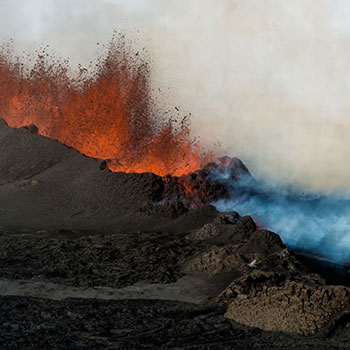What kind of energy does the skier have at the top of a slope? Which forms of energy is it transforming into as the skier moves down the slope?
2 Answers
Potential energy at the top, converted into kinetic energy
Explanation:
Whenever an object is set at some height
Since energy can only be transformed, never created or destroyed, as the skier descends along the slope, it looses potential energy, since
The total energy
The skier possesses gravitational potential energy at the top of a slope, which transforms into kinetic energy as he moves down the slope.
Explanation:
Potential energy is the energy stored within an object due to its position relative to some zero position.
In this case, the zero position is the ground level, or the bottom of the slope. This is also known as the "zero height," indicating that the skier has gravitational potential energy stored at the top of this slope, since it is the position in which his distance from the "zero height" is at its greatest.
Note that as the distance between the skier and the "zero height" decreases, so too does his gravitational potential energy. As this happens, his gravitational potential energy is converted into kinetic energy, or energy that a body possesses in virtue of being in motion. This makes sense, since the skier is MOVING down the slope towards the bottom.
An object's potential and kinetic energy total up to the object's "mechanical energy." Remember the mechanical energy of an object is constant and, therefore, when potential or kinetic energy increases or decreases, its counterpart will decrease or increase, respectively. This explains why potential energy is gradually converted into kinetic energy as the skier moves down the slope.


